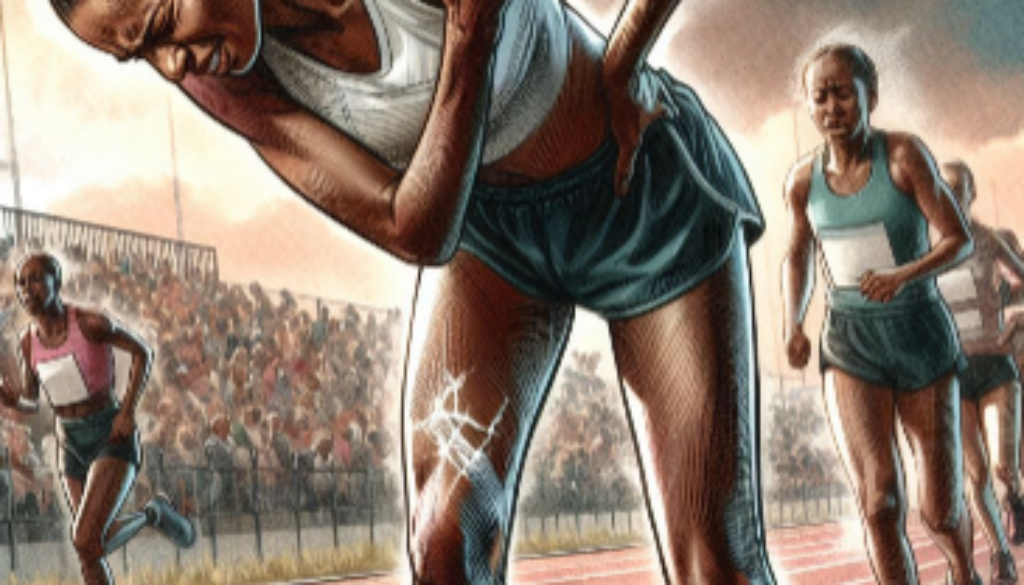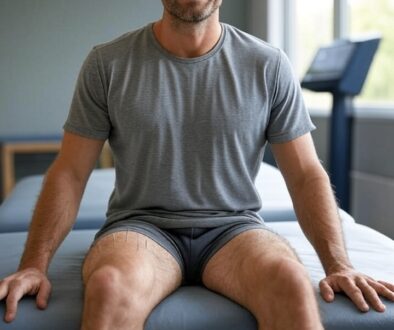Dry Needling: How Does It Work?
Dry Needling: How does it work?
Dr. Scott A. Jones
Physical Therapist
Ever wanted to go a bit deeper into dry needling? Ever want to know more about what it is (is it just acupuncture?), or how it works? In this article we take a breif look at what happens when dry needling is used as part of a comprehensive rehabilitation plan.
The Science Behind Dry Needling: A Brief Look at its Mechanisms and Efficacy in Alleviating Pain and Muscle Tension
I’ve been treating muscle overuse injuries, sprains, strains, and even postoperative surgical site pain with dry needling since 2009. Back then, dry needling was just getting started as a physical therapy treatment, and after more than a year of training through both the Army and the USAF, I became the first in the Air Force to introduce USAF Physical Therapy to the practice. After treating thousands of military men and women using the dry needle technique and retiring from the Air Force I brought that experience here to Colorado Springs where I began my civilian physical therapy practice. In my opinion, dry needling should never be a stand-alone treatment, but should be used alongside corrective exercise strategies, neuromuscular reeducation strategies, as well as manual therapy techniques to round out a complete and integrative recovery process. Ipersonally have found dry needling to be a powerful Therapeutic modality that can help accelerate the recovery process through various physiologic principles. In this article I discuss Some of the research and mechanisms which explain why dry needle therapy Should be considered part of a comprehensive program When developing a strategy for relieving muscle tightness, eliminating trigger points, and decreasing pain.
As a reminder, dry needling is a western Orthodox medical technique that uses thin filiform needles to decrease pain and stiffness, increase joint Mobility and motor control, and improve overall function and comfort. It can be considered as related to acupuncture, but the major difference is that acupuncture is couched in eastern medicine with its primary purpose of realigning and correcting the flow of energy fields. being couched in Western medicine, dry needling focuses on the use of physiological principles as well as neurodynamic principles to Reset pain Pathways and neuromuscular dysfunction to create a window of opportunity for the restoration of healthy, functional movement.
Dry needling has gained significantly in popularity over the past 10 to 15 years due to its rapid ability to help manage pain and muscle tension in the athletic population. In particular, the running population has found a great deal of relief, and return to sport, as a result of the speed with which dry needling decreases muscle stiffness and soreness and thereby quickly reducing pain which is such a predominant fixture within this community where overuse injury seems to be a constant companion.
Before we begin, let’s review several of the proposed mechanisms of action where dry needling is concerned. Remember, dry needling, well not fully understood, has been around long enough to have undergone considerable scrutiny within the medical community. Research articles confirming the efficacy of this technique are common and easy to find. Several of the hypotheses regarding the how and why of its therapy effects are listed here:
- The neurologic effects of dry needling are well established and one primary proposed mechanism suggests that neuromodulation is a key player regarding dry needling ability to produce pain management effects. When a filament needle is inserted, neurotransmitters are released. endorphins, enkephalins, and serotonin All help to inhibit pain signals and provide much welcome relief in the presence of muscle soreness and muscle strains.
- Another proposed mechanism is known as microcirculation improvement. If you are someone who believes that what doesn’t kill you makes you stronger, this one may be for you. The insertion of the needle causes microtrauma at the insertion site. the body responds to this microtrauma by promoting local blood circulation and tissue oxygenation. The theory suggests that the increased circulation at the micro trauma site accelerates the removal of metabolic waste products That enhance inflammation. As a result, tissue healing is accelerated and muscle tension decreases.
- The mechanism most commonly and immediately experienced by patients in the clinical setting is the muscle relaxation that is induced by the generation of a local twitch response. This usually occurs due to the therapist targeting tight bands within the muscles which are known as myofascial trigger points. When a trigger point is targeted, many times there will be a local twitch response, otherwise experienced as a small and quick muscle spasm, which results in relaxation of the muscle and improved joint range of motion and decreased pain..
- Several research studies in the realm of athletics and injury recovery have demonstrated A neuromodulation response within muscle spindle receptors. Muscle spindles provide information on the rate of change within muscle length, and are highly responsive to dry needle therapy and can improve muscle responsiveness as well as joint control and coordination. In turn, this provides a significant injury prevention benefit for a recovering athlete.
Many research articles over the years have discussed the benefits of trigger point dry needling with regard to athletes and non-athletes alike. Here are a few summaries:
- In 2015, CAgnie et al. Study the effects of dry needling for the management of lateral epicondylitis, which is a common overuse injury among many different athletes. Many are surprised at the inclusion of runners in this category. Remember, running requires all joints of the body to be used for significant periods of time. If proper care and Recovery is not given to the upper extremity, including the shoulder blade, shoulder, elbow, and wrist, range of motion can be lost anywhere along this kinetic chain, and and overuse injury can develop. The investigators of this study found that dry needling, when combined with physical therapy, resulted in significant improvements in pain, grip strength, and overall arm function. When compared to the physical therapy treatment alone, athletes in the dry needle group experienced faster recovery, and higher satisfaction.
- In 2014, Llamas-Ramos et al. Conducted a study which pitted trigger point dry needling against trigger point manual therapy for patients suffering from neck pain. The results of the study demonstrated that both therapies, both dry needling and manual therapy, were effective in helping people recover with regard to the severity of neck pain as well as improving neck range of motion. dry needling fared slightly better than manual therapy, edging out manual therapy with regard to better Improvement in pain outcomes. A recent study from 2015 found that up to 1/3 of long distance runners suffer from neck pain, suggesting a significant opportunity for runners to receive pain relief from a common overuse injury.
- This research article falls under the category of systematic review and meta-analysis. This is considered the highest level of evidence available with regard to the consolidation of the current state of research within a given topic. This article conducted a review of 15 randomized controlled trials focusing on the management of myofascial pain and concluded that trigger point dry needling therapy results in significant improvements In pain intensity and functional movement disability compared to control subjects who did not receive these interventions.
So, as you can see, with just a small sampling of the research from the athletic investigation into dry needling demonstrates that this therapeutic modality is highly effective in reducing pain, decreasing muscle tension, and creating an environment that accelerates healing and can even enhance the injury prevention benefits of a comprehensive rehabilitation program. As we have seen, there are several physiologic and neurodynamic effects in play when dry needling is used by skilled hands in a clinical rehabilitation setting. Again, trigger point dry needling should not be considered a standalone option, and as the research has shown, this is a highly effective technique when used by trained hands alongside skilled neuromuscular reeducation and functional exercise progression.
Are you wondering if trigger point dry needling is right for you? This manual therapeutic technique is both highly safe and effective, and is a staple of our holistic and comprehensive rehabilitation practice. while not indicated for everyone, if you or someone you know has been frustrated by an incomplete recovery due to Chronic or overuse injury, or possibly even under recovery from a traumatic injury or surgery, we here at Peak and health and performance would love to sit down with you and discuss the pros and cons of this therapy as well as other options available that would empower you to overcome barriers, move with confidence, and get back to the activities you love.
References:
Cagnie B, Castelein B, Pollie F, et al. (2015). The Effects of Dry Needling in the Management of Lateral Epicondylitis: A Randomized Controlled Trial. Journal of Orthopaedic & Sports Physical Therapy, 45(11), 853-862.
Llamas-Ramos R, Pecos-Martín D, Gallego-Izquierdo T, et al. (2014). Comparison of the Short-Term Outcomes Between Trigger Point Dry Needling and Trigger Point Manual Therapy for the Management of Chronic Mechanical Neck Pain: A Randomized Clinical Trial. Journal of Orthopaedic & Sports Physical Therapy, 44(11), 852-861.
Liu L, Huang Q-M, Liu Q-G, et al. (2020). Efficacy of Dry Needling in the Management of Myofascial Pain: A Systematic Review and Meta-analysis of Randomized Controlled Trials. Archives of Physical Medicine and Rehabilitation, 101(2), 329-345.
As always, our physical therapy clinic does participate in most insurance plans, including Tricare Select, Tricare Prime, and Tricare For Life for military active duty, military retirees, and their dependents. As a United States Air Force retiree myself, I am excited to continue to serve our nation’s guardians and their families.




